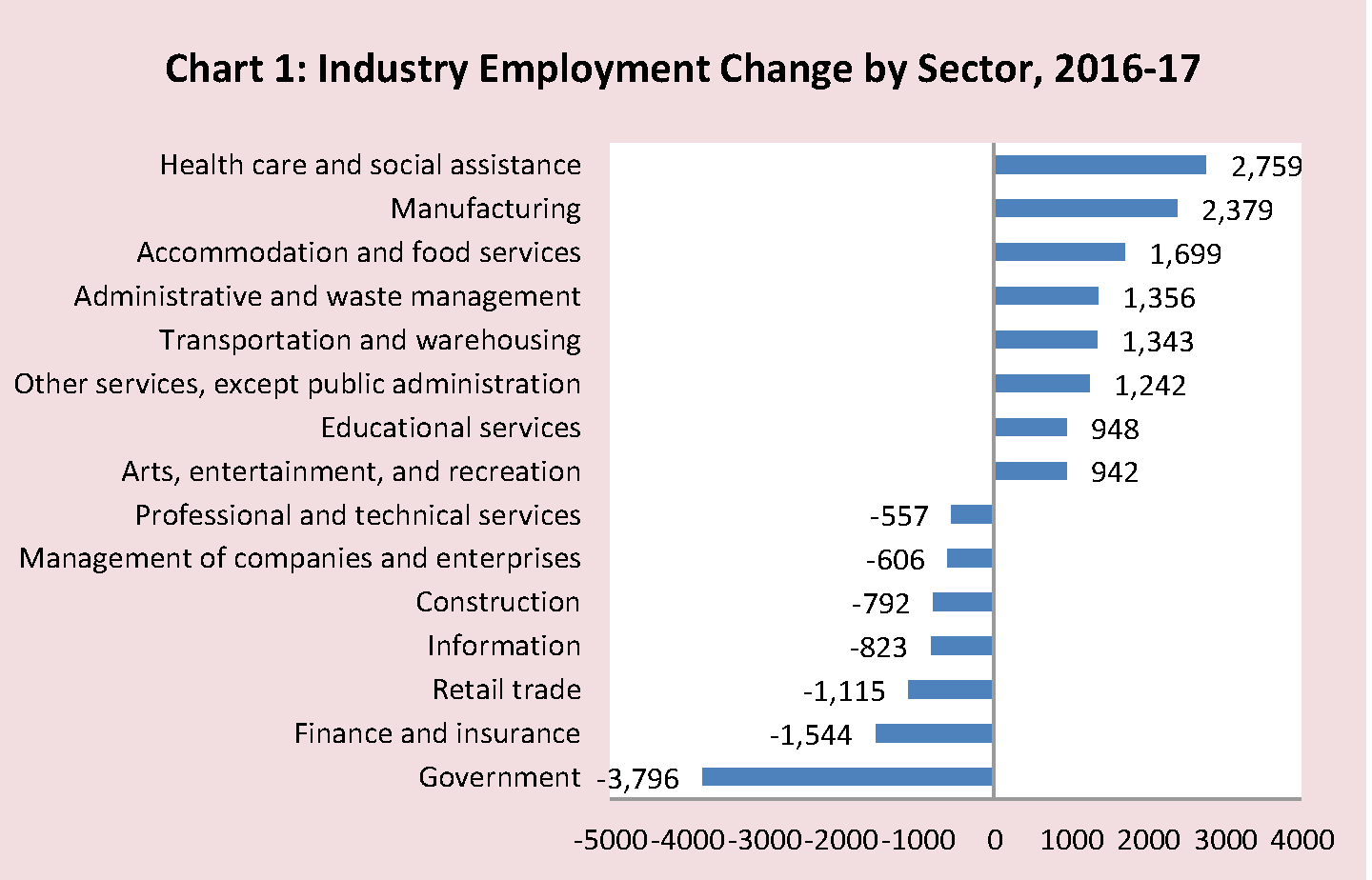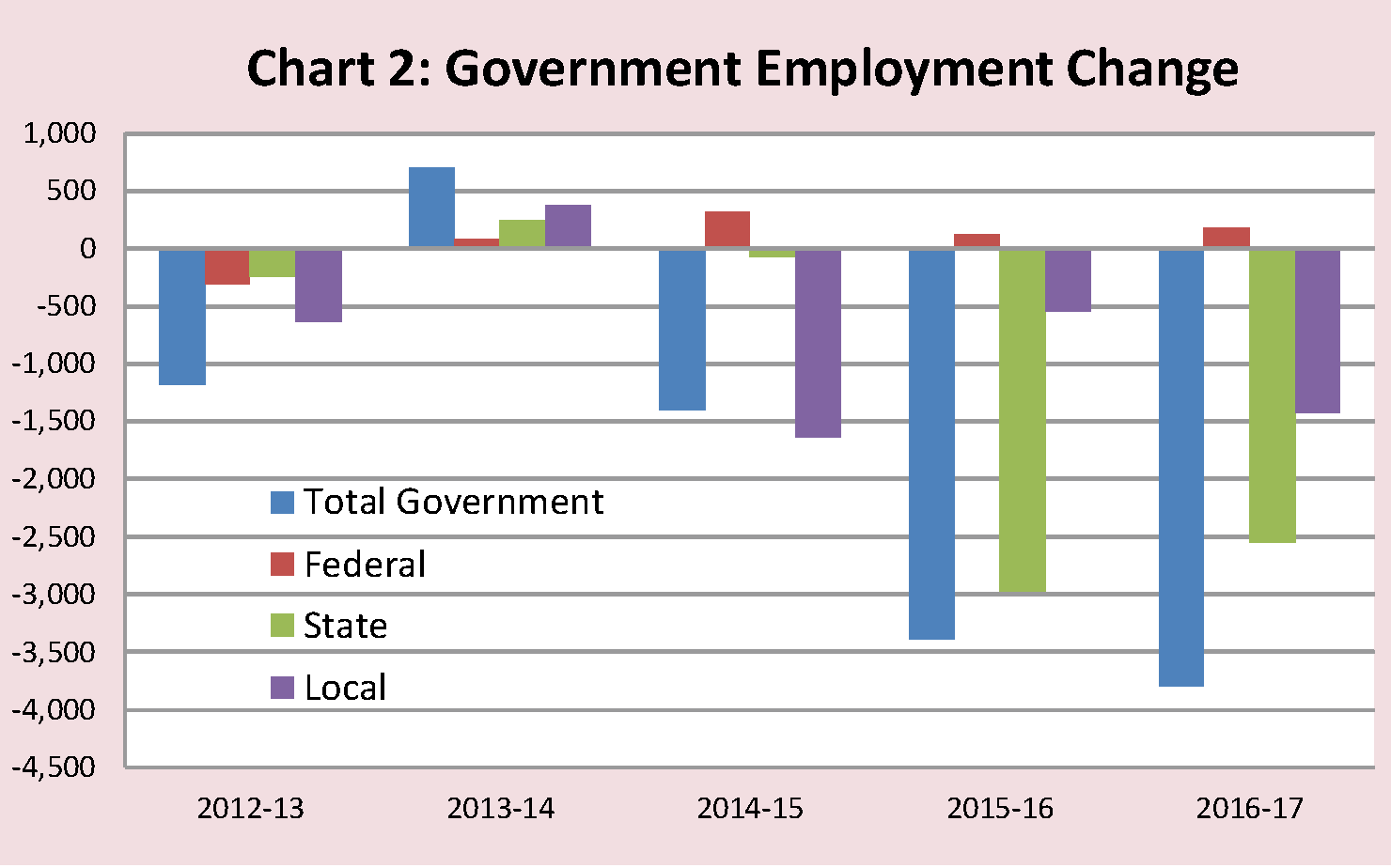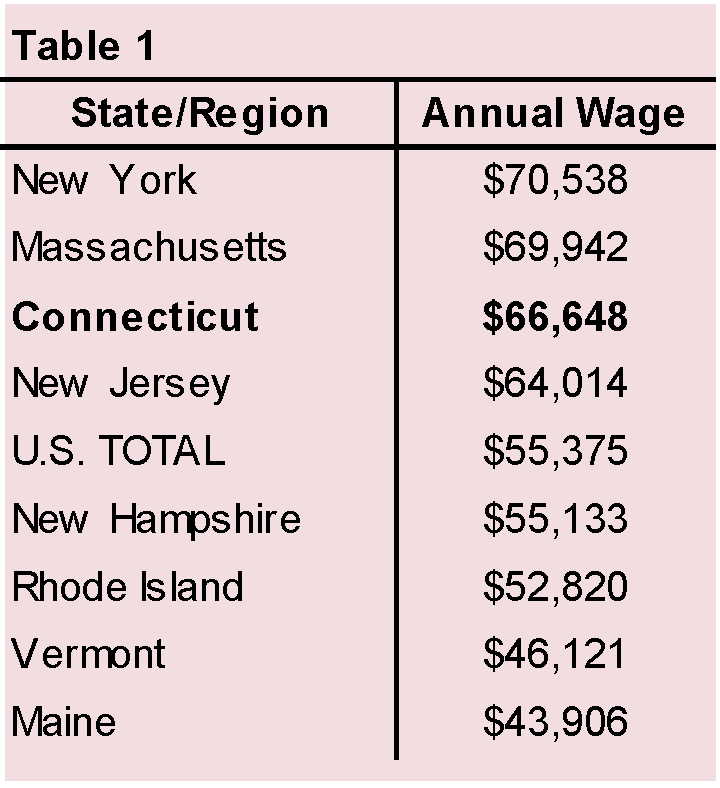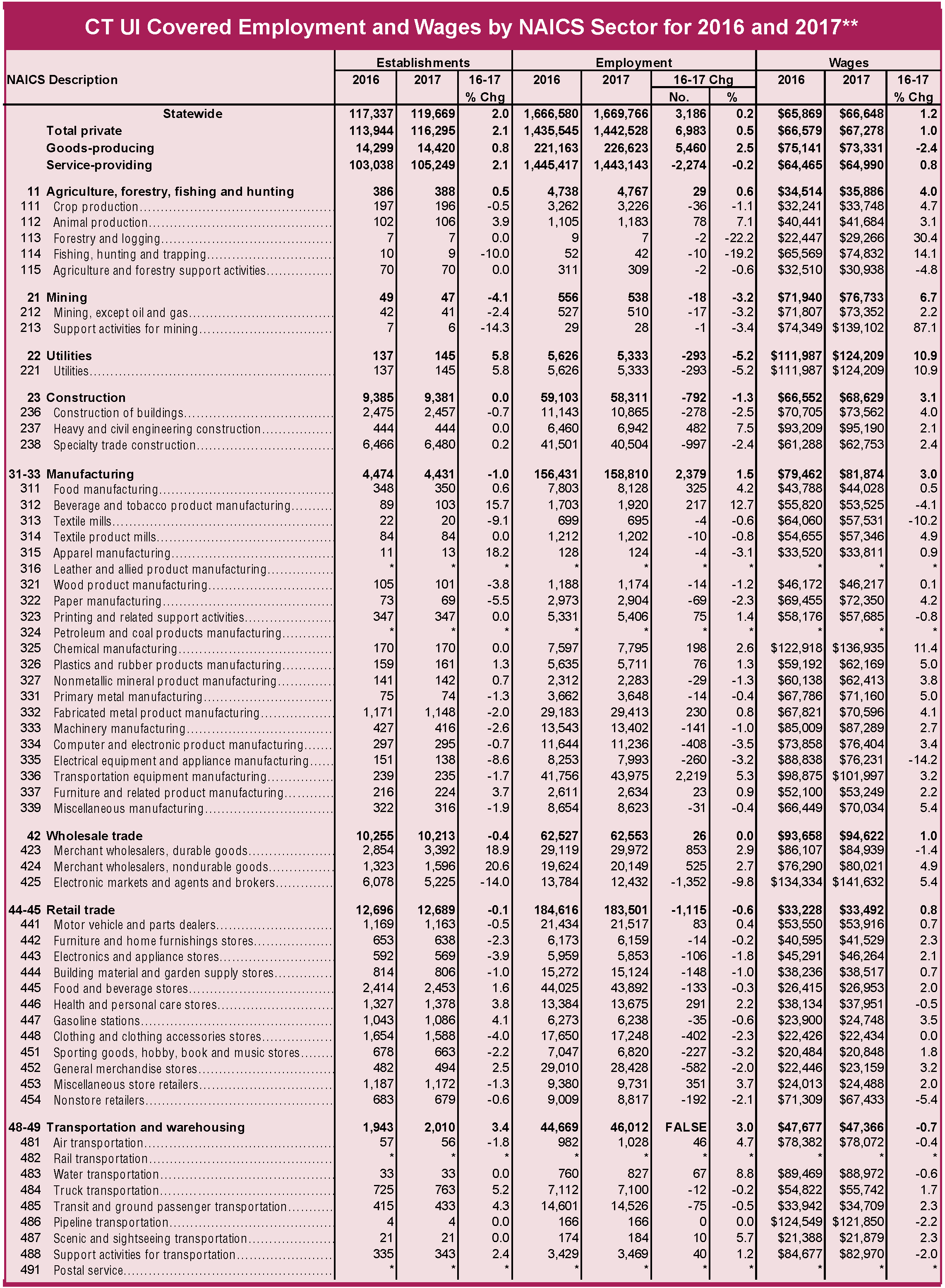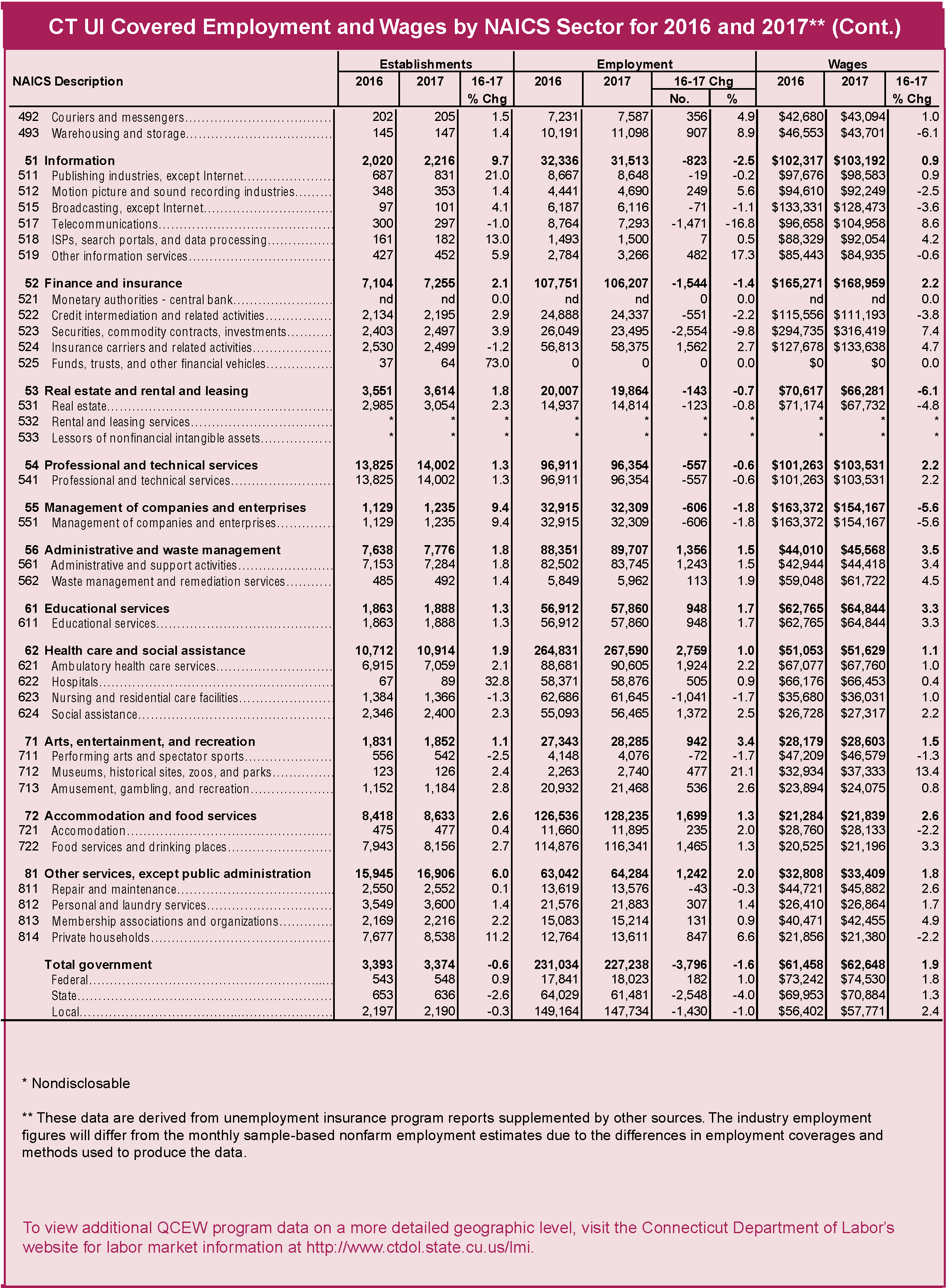
Covered Employment and Wages: A 2017 Annual Review
By Jonathan Kuchta, Research Analyst, DOLAccording to the most recent data published by the Quarterly Census of Employment and Wages (QCEW) program, the number of jobs in Connecticut increased by 0.2 percent during 20171. This is now the seventh consecutive year of employment growth since the Great Recession. Total private industry employment, constituting 86.4 percent of the state’s employment total, increased by 0.5 percent. Total government employment decreased by 1.6 percent year-over-year.
Average annual wages for all Connecticut jobs increased by 1.2 percent, to $66,648, double the increase in 2016. In 2017, private sector wages increased by 1.0 percent to $67,278; government wages increased 1.9 percent to $62,648.
The number of business establishments expanded for the sixth consecutive year, with a new total of 119,669, an increase of 2.0 percent over 2016. Total private establishments represented the entirety of the increase, reaching 116,295 in 2017. Government worksites decreased 0.6 percent in the state, from 3,393 in 2016 to 3,374 in 2017.
Employment
Looking at the sectors with notable gains in 2017, several industries continued to improve from their 2016 levels. The health care and social assistance, manufacturing, and accommodation and food services sectors all showed solid increases. Health care and social services was the largest gainer last year, expanding by 2,759 jobs Chart 1. Manufacturing showed a substantive improvement in 2017, thanks to the hiring actions of multiple large firms, gaining 2,379 jobs. Also notably showing improvement were the accommodations and transportation sectors, with 1,699 and 1,343 more jobs than in 2016, respectively.
For sectors that declined in 2017, government once again dropped the most, with a loss of 3,796 jobs, and finance and insurance with a drop of 1,544 jobs. Retail trade also continues to shrink in the state, down by 1,115 jobs. See pages 3 and 4 for data on other industry sectors and subsectors.
Much of the loss in government was due to retirements and hiring freezes; this trend is expected to continue into the 2018 annual data. While the drop in state government was similar from year to year, local government employment dropped by 1,430, a nearly three-fold decrease Chart 2. Within local government, these losses are found primarily in education and public administration.
The Bureau of Labor Statistics (BLS) aggregates the North American Industrial Classification System (NAICS) sectors to form the top level goods-producing and service-providing “domains”. Goods-producing sectors include agriculture, forestry, fishing, and hunting; mining; construction; and manufacturing. The remaining sectors are aggregated into the service-providing domain.
For 2017, the goods-producing domain encompassed 13.5 percent of total covered employment, with the remaining 86.5 percent in the service-providing domain. The goods-producing employment grew by 5,460, or 2.5 percent, with service-providing employment shrinking by 0.2 percent, or 2,274, at the same time.
Wages
Connecticut average annual wages varied greatly between industries and within each sector in 2017. It should be noted that much of this difference in pay level can be attributed to factors such as hours worked (full- or part-time), workforce composition, wages, including bonuses or stock options, and seasonal and weather related influences.
At the other end of the spectrum, accommodation and food services workers earned the least, at $21,839. This increase of 2.6% was greater than the state average, though it is heavily influenced by part-time workers. Next were arts, entertainment and recreation at $28,603 and other services, except public administration at $33,409 in annual wages.
2017 was a better year for wages in general, as most sectors experienced some wage growth. Goods-producing wages showed a decline of 2.4 percent compared to 2016, at $73,331. They are 10.0 percent above the annual average for all industries. Service-providing wages experienced growth, rising to $64,990, an increase of 0.8 percent on an annual basis. Connecticut continues to maintain comparable annual wages to nearby states in the Northeast, coming third behind only New York and Massachusetts (Table 1). Average wages in Connecticut are 20.4 percent above the U.S. average.
